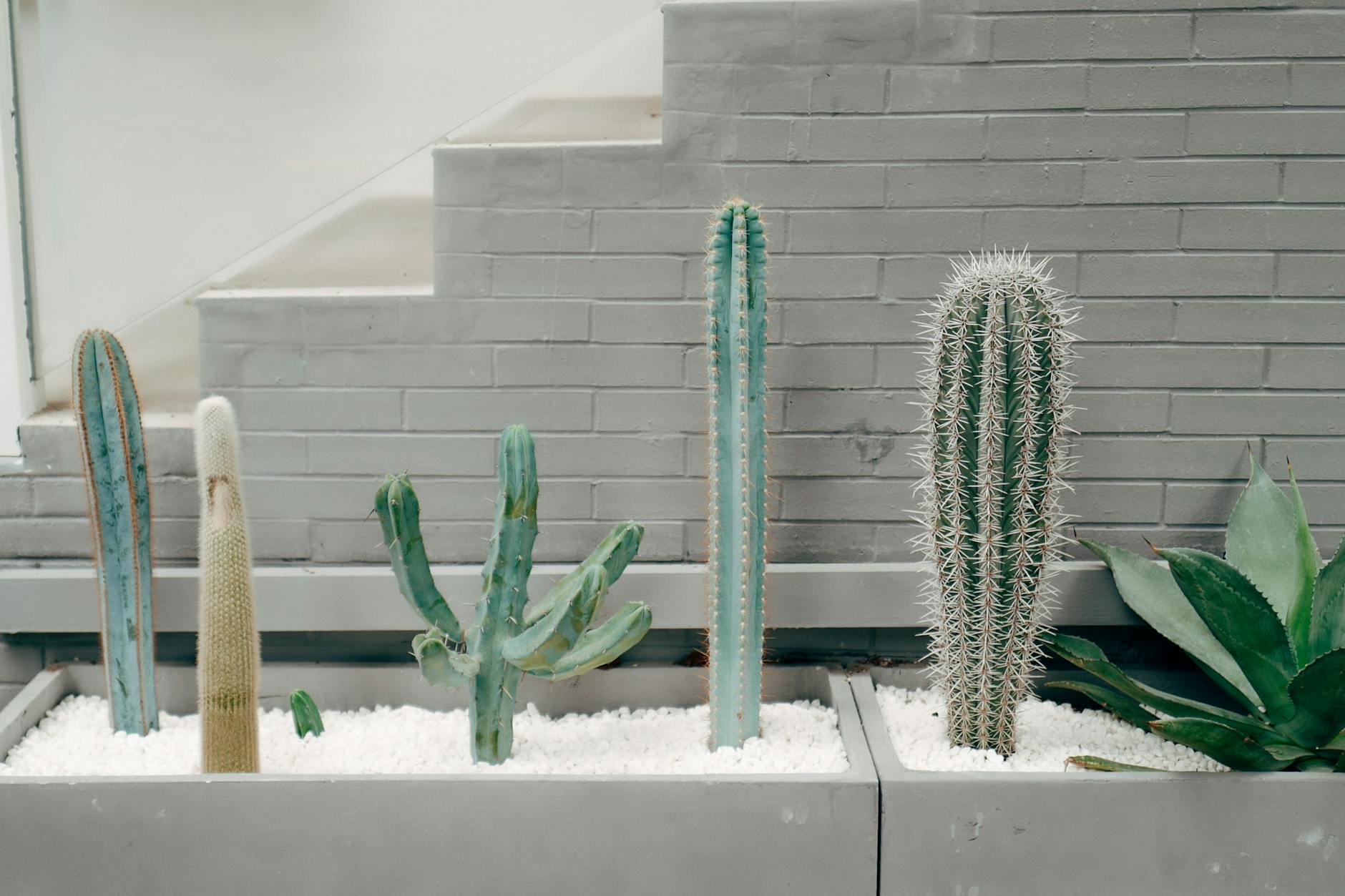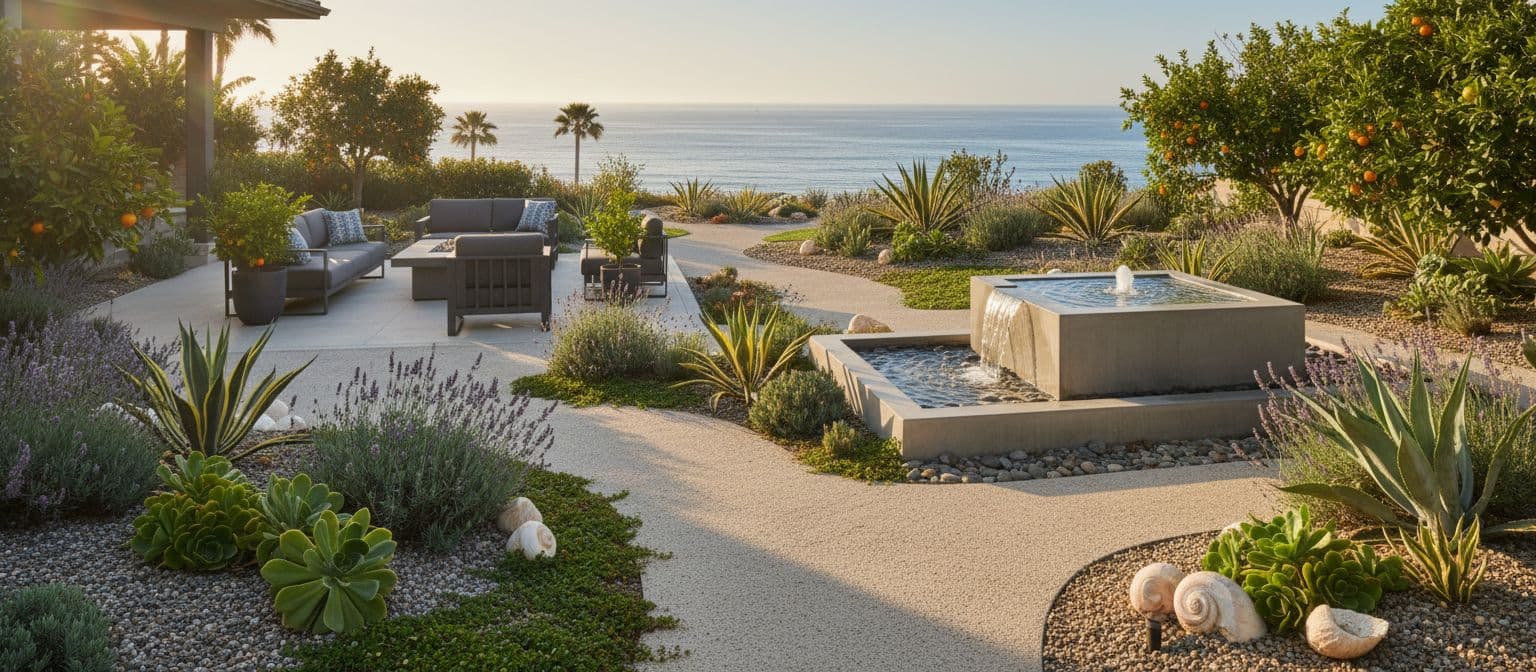Busy days and water limits make yard work feel like a second job. The goal is clear: a good-looking garden that asks less from the calendar and the hose. Coastal yards add a twist with salty air, bright sun, and mild winters that favor tough, tidy choices. These tips also support landscape design newport beach homeowners can trust for year-round curb appeal. The plan is simple. First, set up water-smart care. Next, choose clean, easy surfaces and a layout that stays neat. Finally, add hardy plants that bring color without fuss.
Start With a Water‑Smart Plan That Cuts Weekly Work
Smart planning removes the biggest chores before they start. Begin with a clear map of how the yard gets used. Show where people walk, where kids or pets play, and where quiet seating fits. Keep high-traffic areas sturdy and open, and reserve planting zones for places that do not see daily use.
Group plants by water needs. This is called hydrozoning, and it keeps irrigation simple. Low-water plants go together, and moderate plants go together. With zones set, run a drip system that feeds the root zone, not the air. Drip lines reduce evaporation, limit weeds, and stop overspray on walls and paths. Pair that system with a smart controller that adjusts for weather. A quick setup trims watering time and water bills while keeping soil moisture consistent.
Mulch is the hidden helper. Two to three inches of gravel, bark, or chipped wood shades the soil, protects roots, and slows weeds. Add a sharp edge between mulch and paths so it stays put. In sloped spots, cut shallow basins and use check stones to slow runoff. This steers water to plants instead of the street.
Consider capturing roof runoff into a dry stream or a simple rain garden. In coastal neighborhoods, this keeps water on the property and feeds deep roots. If the yard is small, even a narrow stone swale helps. For homeowners who want a guided setup that fits local codes and coastal conditions, work with Sustainable landscape solutions for Orange County homes to plan irrigation, drainage, and maintenance together.
Keep maintenance in mind at every step. Fewer zones, consistent emitter sizes, and easy-access valves cut future fixes. Place hose bibs near planting beds and seating zones to reduce hauling. A little planning saves many weekend hours later.
Easy Paths, Patios, and Bed Shapes That Stay Clean
Hard surfaces do a lot of the heavy lifting in a low-care garden. Choose materials that sweep clean, drain well, and resist stains. Large-format concrete pavers, porcelain pavers, or sealed concrete reduce grout lines where weeds grow. Permeable pavers with compacted gravel joints drain quickly and keep puddles off the patio. Decomposed granite (DG) paths, if stabilized, offer a firm, natural look with less tracking into the house.
Keep edges crisp. Steel, aluminum, or concrete curbs lock mulch in place and prevent lawn from creeping into beds. Where grass meets paving, install a mower strip with flush-set pavers or poured concrete. That edge lets the mower glide and reduces hand trimming.
Path width matters. A front walk feels good at 4 feet, while side yards can run at 3 feet. Consistent widths prevent odd slivers of planting that become weed magnets. Curves should be gentle and purposeful, not wavy. Each curve needs an edge that holds its shape without constant touch-ups.
Bed shapes affect effort as much as materials do. Design fewer, larger beds with simple outlines. Avoid tiny islands that are hard to weed and water. Set boulders, urns, or a single feature to create focal points without adding care. For patios, limit furniture sets to what is used weekly. Less clutter means less sweeping and faster rinsing.
When choosing finishes, look for textures that hide dust and salt spray. Matte or lightly textured surfaces show fewer streaks. In coastal settings, stainless or powder-coated hardware stands up to air and sun.
For visual references that match coastal style and clean layouts, review these curated coastal landscaping ideas. The mix of gravel paths, low edging, and simple patios shows how design choices reduce daily tasks.
A quick surface guide:
Surface typeWeekly care neededNotes for coastal yardsSealed concreteLowRinse seasonally, seal every few yearsLarge porcelain paversLowStain resistant, minimal grout linesPermeable paversLow to moderateOccasional joint top-off, great drainageStabilized DG pathModerateRake and spot-repair after heavy rain
Planting Ideas That Thrive in Coastal Newport Beach

Photo by billow926
Plants for salty air, sun, and mild winters should be tough, tidy, and colorful. Think structure first, then seasonal accents. Start with sculptural forms that hold the scene in every month. Agave and aloe bring bold shape, while New Zealand flax adds upright lines. Indian hawthorn and pittosporum form compact hedges that stand up to coastal breezes.
For groundcovers, choose spreading options that knit soil and block weeds. Dymondia creates a flat, silver-green carpet between pavers. Ice plant brings bright blooms and handles salt. Lantana offers long-season color with little care once established. In narrow strips, society garlic gives lavender flowers and a clean, grassy look.
Fragrance and herbs also thrive near the coast. Rosemary (upright or trailing) handles wind and poor soil, and it trims well into low hedges. Lavender prefers fast drainage and full sun, and rewards with scent and pollinators. For a fresh, local example of drought-wise choices and tight layouts, see this Newport Beach backyard design overview. The ideas show how to create rooms, set clear edges, and keep water use in check.
Color can be simple. Pick a palette and repeat it. Silver foliage, deep green, and one bloom color look calm year-round. Bougainvillea gives bold color on trellises with minimal water once roots are deep. Pair with evergreen anchors like olive or strawberry tree for structure. Where wind is strong, use fences or vine-covered trellis to break gusts and reduce plant stress.
Soil prep supports low care. Blend compost into planting holes, then mulch every year to keep moisture steady. Water deeply while plants establish, and then cut back. This step builds deep roots and fewer touch-ups later. For lists of coast-friendly choices and combinations, browse these plants for coastal landscaping, then match selections to sun, size, and care goals.
If a project calls for a tidy install, professional help can speed results and reduce rework. Explore Garden design and installation in Newport Beach to plan beds, irrigation, and lighting in one pass. A coordinated build means fewer mistakes and less maintenance over time.
Conclusion
A low maintenance garden grows from a clear path. Plan for water-smart care, choose easy surfaces and edges, then add tough, colorful plants. Small moves this week make a difference, like mulching beds and setting a smart controller. For anyone planning landscape design newport beach projects, these steps keep care simple and results strong. Start with one zone, test what works, and build out with confidence.




